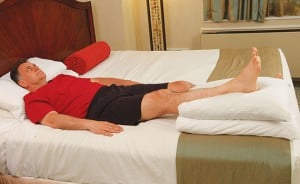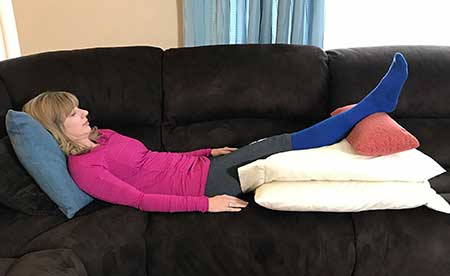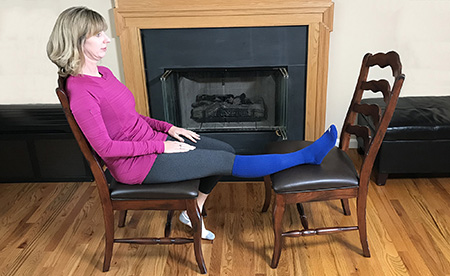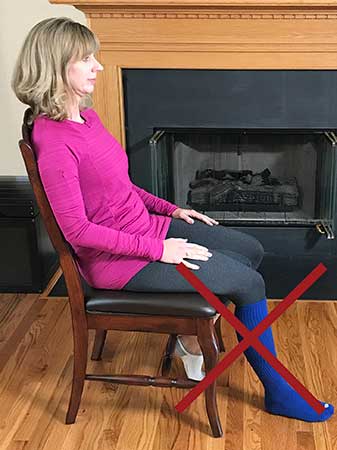Rehabilitation Guide
Daily Activities After Right Foot or Ankle Surgery
Preoperative Physical Therapy
Preoperative Physical Therapy for Left Anterior Total Hip Replacement
Hospital for Special Surgery Rehabilitation offers one-on-one preoperative physical therapy (PT) education sessions to individuals undergoing a hip or knee joint replacement surgery. During this preoperative education session you will spend one-on-one time with a physical therapist to learn and practice your surgeon specific post-surgical activities such as any applicable precautions, exercises, and activities of daily living. In addition to the preoperative PT education session, we recommend that you review this site several times in order to reinforce the information and optimize your preparedness for activity after surgery.
Contact Information
Pre-op Main 6
535 East 70th Street, 6th floor
New York, NY 10021
646.714.6844
HSS Paramus Rehabilitation and Performance
15 E. Midland Avenue, Suite 1A
Paramus, NJ 07652
201.599.8000
HSS Rehabilitation Westchester
1133 Westchester Avenue
White Plains, NY 10605
914.821.9100
Tips for Returning Home
Tips for Returning Home After Left Foot/Ankle Surgery
Below are some general guidelines to assist you as you transition home after surgery. If you have specific questions, please speak to your therapist or call your physician’s office.
Driving
- Please check with your MD regarding instructions on driving.
Hygiene
- You may shower once you are home
Management of swelling
- You may encounter bruising and/or swelling in the operated leg.
- Swelling can be minimized by elevating the right leg when resting in bed.
- Icing may be helpful in managing swelling. Please follow your surgeon's instructions regarding ice application.
- When elevating the leg, the ankle should be above the level of the heart and the knee must be straight:

Around the house
- Roll up throw rugs and clear any loose wires from phones, computers, TVs, etc from the floor to reduce the risk of tripping and falling.
- Chairs that have arm rests are best to use. Avoid chairs with wheels that may move while you’re trying to sit down or stand up.
- Put nightlights near the bathroom and in hallways to help you walk around safely at night.
- If you have a pet who tends to jump up on you when you come home, it’s a good idea to keep them crated or in a separate room until you can sit down so that they don’t accidentally knock you off balance or get tangled under your feet.
What to eat
- Plan meals ahead of time that are pre-made, heat and serve, or easy to prepare.
What to wear
- Choose loose fitting clothing that is easy to get on and off.
- Wear a pair of slip-on rubber soled shoes for safer ambulation.
Exercise
- Try to walk short distance multiple times a day, increasing the distance/frequency as tolerated.
- Avoid cobblestones/slopes.
- At 2 weeks after surgery, you should be able to walk up to a mile cumulatively in a day.
- You many begin using a stationary bike as soon as tolerated.
- Please check with your MD regarding using the pool after surgery.
Follow-up appointment
- Your first MD follow-up is 4-6 weeks after surgery. Please call your surgeon’s office to make this appointment.
Post-Surgical Equipment
Below is a list of equipment that patients commonly use after surgery during the recovery phase. The list is not all-inclusive, and you may or may not need them all. If you have specific questions, please speak to your therapist.
- Rolling walker
- Crutches
- Knee walker
- Extra pillows: to assist in elevating your foot
- Stool: for ease in stair negotiation on your buttocks
Medical Equipment Order Information
Biodynamic Technologies has been supplying HSS and its patients with medical equipment for many years. If you would like to use Biodynamic Technologies, you can call 1.800.879.2276 to order the medical equipment that you will need after your hospital stay. You then may pick up the equipment at their office located at 431 E 73rd St, New York, NY 10021. Or for your convenience, it may be shipped to your home.
If you prefer, you may also purchase these items from your local surgical supply store or online.
It is recommended that you obtain the equipment prior to your surgery so that is readily available upon your discharge home.
Physical Therapy After Surgery
Depending on your type of surgery, your doctor will most likely recommend physical therapy (PT) at some point in your recovery to assist in regaining your flexibility, strength, balance and to improve overall mobility function. Your doctor will inform you when to begin PT and will provide a prescription which is required to begin treatment.
If you don't already have a therapist in mind, you have the option of making your appointments at an HSS outpatient location in Manhattan, Westchester, Connecticut, or New Jersey.
You can also contact the HSS Rehabilitation Network, which comprises over 170 independently owned physical and occupational therapy practices throughout New York, New Jersey, Connecticut and Florida.
Positioning After Right Foot or Ankle Surgery
HSS Rehabilitation has prepared this material to help guide you through your recovery after your foot or ankle surgery. If you have more specific questions, please contact your physician or physical therapist.
Lying position
- The primary resting position is lying down with the foot elevated.
- Try to elevate the foot above the level of your heart.
- Keep your leg supported.
- Avoid placing weight directly on your heel

Sitting position
- Minimize sitting time as much as possible to limit swelling.
- When sitting, elevate your leg as tolerated.
- Do not allow your leg to dangle downwards for too long.


